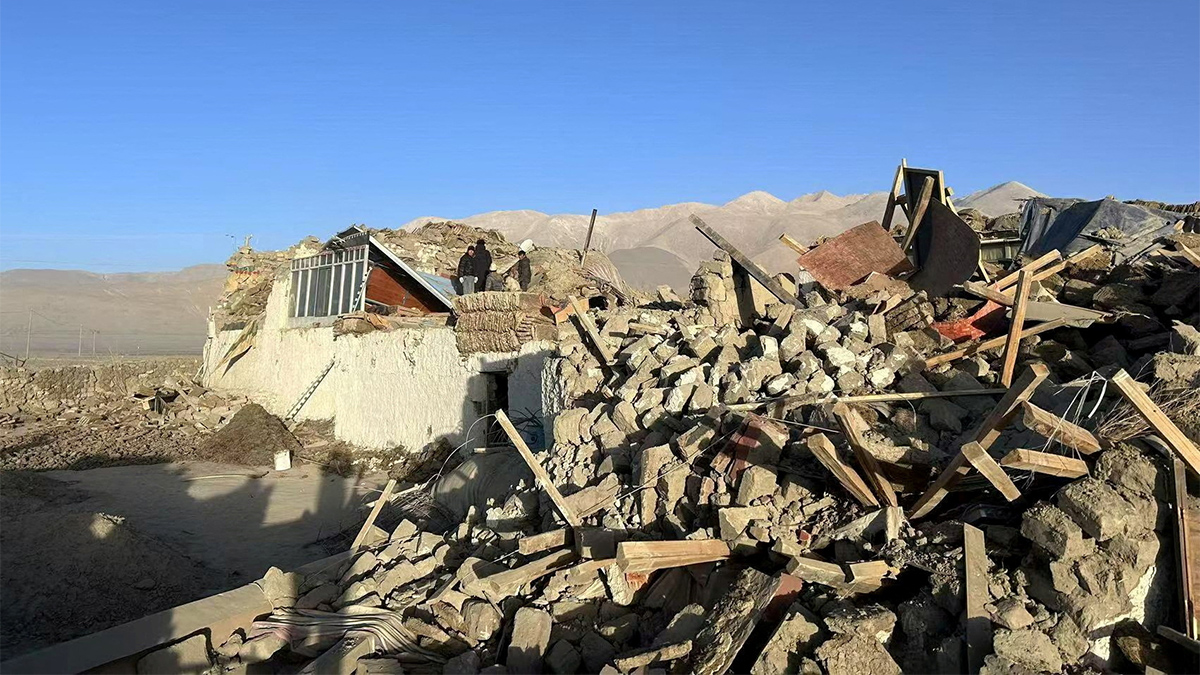An earthquake in Tibet has highlighted the region’s vulnerability to such natural disasters. The quake, with a magnitude of 7.1, hit Tingri County near Shigatse. It caused significant destruction , claiming at least 126 lives, injuring 186 people and damaging many buildings.
As reported by South China Morning Post, authorities in Tibet deployed over 300 rescuers and medical personnel as part of a level 2 emergency response, the second highest in a four-tier system.
This disaster has also raised fears about the safety of a large hydropower project planned on the Brahmaputra River, which is crucial for millions in South Asia.
Tibet: A seismic hotspot
Tibet, China calls it Xizang, is located in one of the most earthquake-prone areas in Asia. This is because the Indian and Eurasian tectonic plates are continuously colliding, which not only created the towering Himalayas but also keeps them moving. The region is crossed by fault lines like the Main Himalayan Thrust and the Brahmaputra Suture Zone, making it highly vulnerable to frequent and powerful earthquakes.
A major seismic event in the region was the devastating 1950 Assam-Tibet earthquake, which had a magnitude of 8.6, showing the region’s potential for large-scale destruction. The region’s dangerous geography, with steep mountain slopes and glacial lakes, makes it even more risky, as these lakes can cause floods. The high altitude of the plateau also makes the effects of seismic waves stronger, leading to further disasters like landslides.
Impact Shorts
More ShortsThe recent earthquake has once again shown despite advanced technology for monitoring seismic activity, the extent of the damage highlights that even the best preparedness plans may not be enough in a region so prone to earthquakes and natural disasters.
In a map featured by South China Morning Post from the open-source OpenStreetMap, the hair-raising proximity of the earthquake’s epicentre to the Brahmaputra, known as Yarlung Zangbo in Mandarin, the site of China’s colossal dam project, sends a chilling reminder of the risks at play.
The Brahmaputra dam project: Engineering feat or ticking time bomb?
At the heart of growing concerns is the ambitious hydropower project on the Brahmaputra river. This project, approved as part of China’s plan for carbon neutrality and economic growth, aims to tap into the river’s huge hydropower potential.
The river takes a sharp U-turn before entering Arunachal Pradesh in India and the project is seen as a key part of China’s renewable energy strategy, with an estimated investment of over $137 billion.
However, the location of the project, deep within a seismic zone, raises serious safety concerns. Studies, including a report from the Journal of Earth Sciences and Geotechnical Engineering by Adamo et al, have warned that earthquakes could threaten the safety of the dam. Factors like ground movements, the strength of the foundation rock and the design of the dam are crucial in determining whether the project can survive seismic shocks.
Earthquake-dam nexus
Historical examples show the risks that earthquakes can pose to dams. For instance, a study of the Budhigandaki concrete arch dam in Nepal, published in SpringerOpen Environmental Systems Research, found that a breach would likely flood around 150,000 buildings, impact nearly 672,000 people and cover 3,500 km of roads.
Similarly, while not caused by earthquakes, the failure of the Oroville Dam in California highlights how bad safety measures can lead to disastrous consequences.
Despite thorough geological surveys and safety technology, the Brahmaputra hydropower project in Tibet is still at risk. If the dam were to fail, it could cause catastrophic flooding in the Brahmaputra basin, affecting China as well as neighbouring countries like India and Bangladesh. This is especially worrying because the area has a high population, relies heavily on agriculture and lacks proper flood protection systems.
Diplomatic and geopolitical concerns
India, as a major downstream country, has often expressed concerns about the impact of the hydropower project on water flow and sediment in the Brahmaputra river. Although China has claimed that many studies have solved safety concerns, the recent earthquake has raised doubts again.
The situation is made worse by the lack of a water-sharing agreement between China and neighbouring countries, leaving downstream nations at risk of decisions being made without their input.
Additionally, this earthquake could make relations between India and China even more tense, especially because of their territorial disputes and lack of trust. The Brahmaputra river, which flows into India’s northeastern states, is vital to life in the region but also a source of regional tension. If the dam were to fail, it could turn a natural disaster into a major political crisis and as a criminal cause of affliction to humanity.
Ecological and societal implications
The hydropower project also has serious ecological effects. Building large dams can disrupt river ecosystems, affecting fish migration, sediment flow and local wildlife. The region’s seismic instability makes things worse as earthquakes can cause landslides and sediment buildup that block rivers.
On a social level, the forced relocation of local communities for such large projects is a major issue. While the Chinese government highlights the job opportunities and regional development the project might bring, the risks of earthquakes could overshadow these benefits.
Lessons and the way forward
As rescue teams work hard after the Tibet earthquake, the tragedy serves as a reminder to policymakers, engineers and environmentalists. It shows that nature can often overpower human efforts and ignoring these risks can lead to huge losses.
Balancing development with safety is not just a technical task, but a moral responsibility, especially for a region that affects millions of people downstream. By recognising the area’s risks and encouraging global cooperation, this earthquake could become an important moment in creating a safer and more sustainable future for the Himalayas and beyond.


)

)
)
)
)
)
)
)
)



